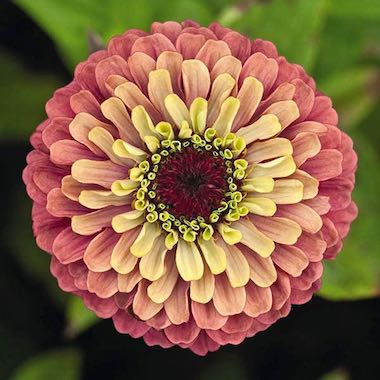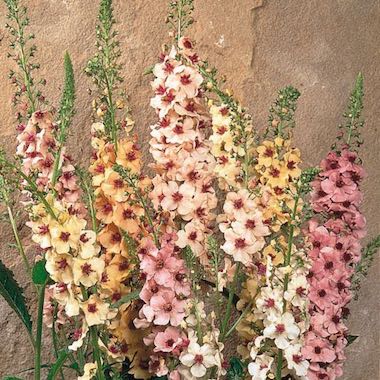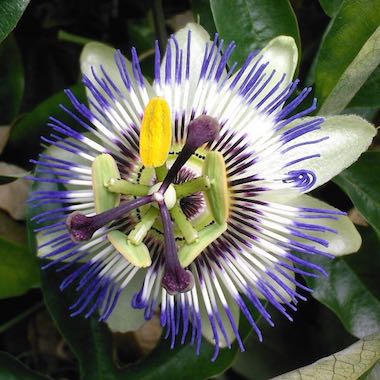Tithonia rotundifolia, or Mexican Sunflower, is a bold summer annual that has captured my heart this season. Tithonia is named for Tithonus, a Trojan prince who, in Greek mythology, was a love interest of Eos, the goddess of the dawn. Native to Mexico and Central America, tithonia is at home in any garden with a good-sized sunny spot. Blooming starts about midsummer; the rich orange, 3 to 4 inch flowers resemble single-flowered dahlias. Tithonia plants typically grow 4 to 6 feet tall, but in the right spot, they can reach 7 or 8 feet.
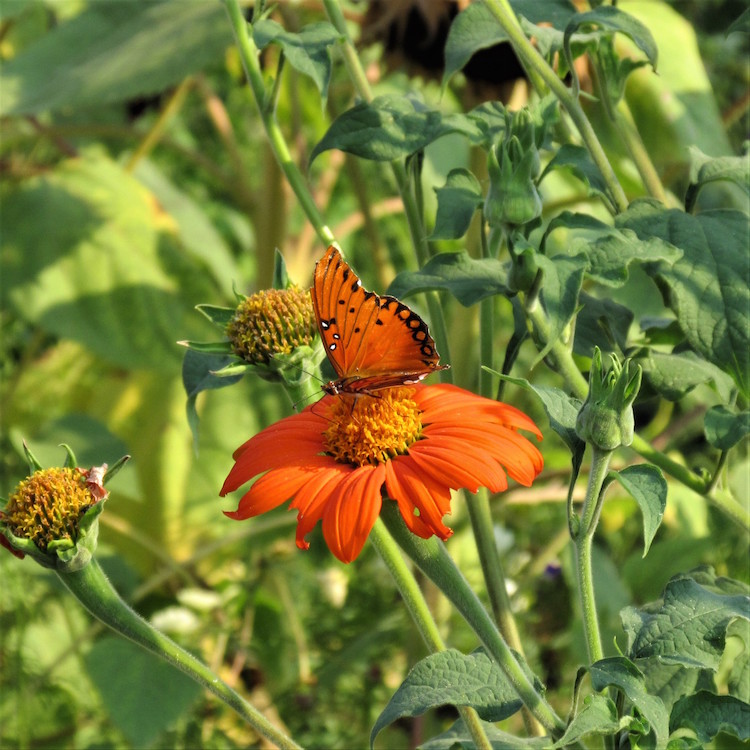
Frittilary butterfly on a tithonia blossom.
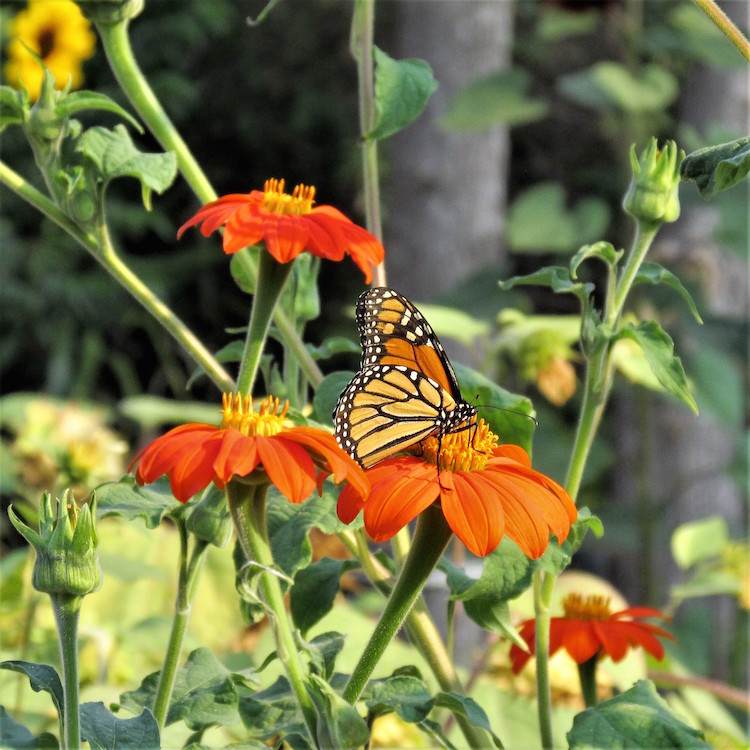
Monarch butterfly on a tithonia blossom.
Tithonia flowers make perfect landing pads for passing butterflies, and provide nectar for numerous beneficial insects. In a span of 10 minutes or so one morning, I saw 4 types of butterflies, honey bees, hoverflies, and a hummingbird all feasting on the flowers of one large tithonia plant. Pruning spent flowers will lengthen the bloom season, however, many birds love to feed on the seed heads that follow those spent flowers if they are not cut.

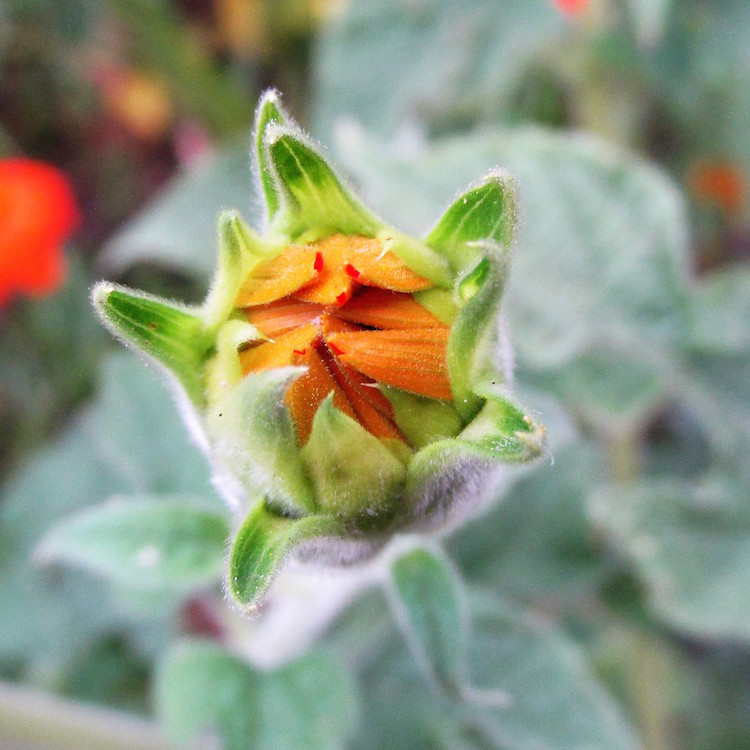
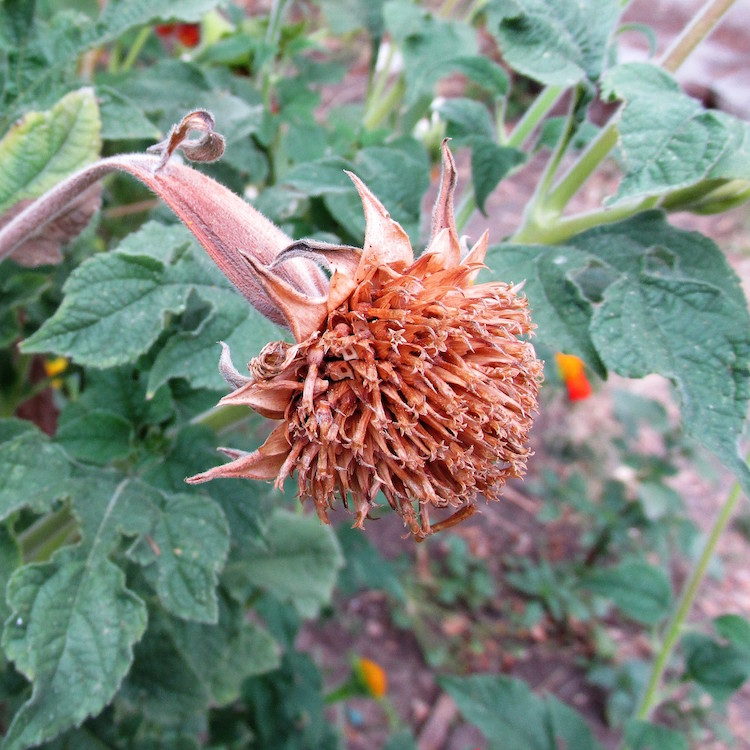
Left to Right: A tithonia seedling about 3 weeks after sowing, a tithonia flower bud emerging, and a dry tithonia seed head.
Tithonias grow quickly and easily from seed. The foliage is covered tiny soft hairs, lending a velvety appearance and feel to the leaves. Seedlings can be pruned when young to encourage a more rounded, bushy form. Left alone, tall plants can benefit with a central stake for support, especially if you garden in a windy area.
Although I have admired tithonias growing in other gardens, and have even seen them growing in their native habitat in Mexico, this is the first year I have included them in my garden. I can see why the goddess Eos was so smitten!


